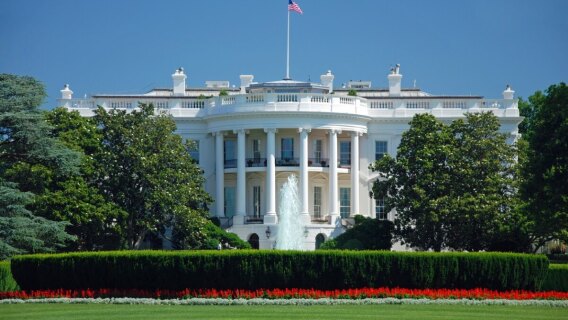Some investors dreaded what a Joe Biden win would mean for the stock market, but those worries were somewhat unfounded as the S&P has returned 51% (roughly a 12% annual return) since his inauguration despite the ongoing inflation fight, the commensurate Fed activity and increasing global conflict. Contrary to popular belief, stock market performance is better under Democratic presidents than Republican ones. In fact, it’s not close.
According to Liberum, a U.K.-based investment bank, since 1947 the average annual return under Democratic presidents is 10.8%, versus a mere 5.6% return under Republican presidents.
The best stock market performance by a president in the post-World War II era came under Bill Clinton; the S&P 500 was up a whopping 210% in his two-term presidency, from 1993-2001. The second-best return under a U.S. president? That would be Barack Obama’s eight-year tenure when the S&P was up 189% from 2009-2017.
Next up are a pair of Republican presidents: stocks rose 129% under Dwight Eisenhower (1953-1961) and 117% under Ronald Reagan (1981-1989).
Rounding out the top five is Democrat Harry S. Truman, who saw the S&P rise 87% during his eight-year term (1945-1953).




Trump’s Stock Market Performance
How did Donald Trump fare in his (first?) four years in office? Pretty well, especially considering what happened in 2020.
The S&P 500 was up 63% during Trump’s tenure – currently outpacing Joe Biden’s performance, with three and a half months still to go. That works out to about a 1.3% per-month return, or a 126% return if he had won re-election and served two terms. That would place him fourth on this post-World War II list, just ahead of Ronald Reagan.
Of course, context matters when it comes to U.S. presidencies.
It’s important to note that Obama took office just as stocks were hitting multi-year lows on the heels of the worst recession since the aforementioned Great Depression. Obama benefited from the bounce-back—though, you could argue that he was largely responsible for facilitating it.
On the flip side, President Trump had the bad fortune of being in office when the worst global pandemic in more than a century forced Americans to stay home almost an entire year and the economy to plunge. One can debate how his handling of Covid-19 impacted the economy and by extension the stock market (I’m not touching that one). But the coronavirus would have been bad news for any president, at least for a time.
Biden certainly benefitted from global post-Covid reopening trends and a resilient U.S. consumer. That could mean a post-recession bump (or even a recession-free “no landing” scenario) for his potential successor, Kamala Harris, similar to the one he and President Obama enjoyed 12 years ago.
And that’s really the point. Stock market rallies can last for generations, cross aisles, and survive times of terrible political turmoil like we have now. Though Wall Street historically prefers a Democrat in office, there has been many a bull market on the watches of Republican presidents. For evidence, look no further than Donald Trump’s previous tenure.
So, while it’s fair to have celebrated the impressive stock market performance under Trump, you shouldn’t fear any sort of lingering market correction should Harris win the election next month—or at least not one that has to do with a Democrat being in office.

Sign up now!

Sign up now!

Sign up now!

Sign up now!
*This post is periodically updated to reflect market conditions.

